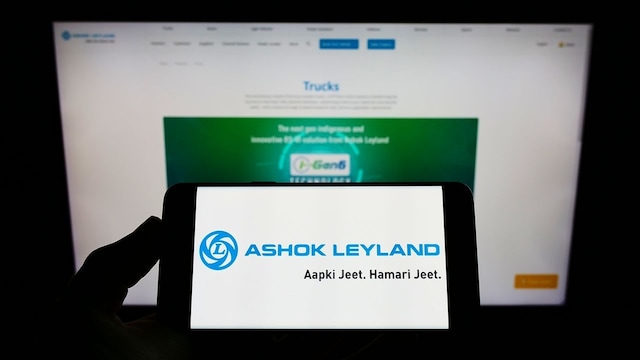HomeMarket NewsGST cut and RBI credit push could lift commercial vehicle outlook: Ashok Leyland
Shenu Agarwal, MD & CEO of Ashok Leyland underlined that the outlook for the CV industry in FY26 and FY27 would improve sharply if the GST cut and RBI credit push materialise together, as they directly address the two biggest bottlenecks — high upfront cost and financing availability.

The outlook for India’s commercial vehicle (CV) industry could shift upwards if two anticipated policy moves— a reduction in Goods and Services Tax (GST) rates and easier access to credit facilitated by the Reserve Bank of India (RBI)—take shape. Shenu Agarwal, MD & CEO of Ashok Leyland, believes that the combination of these measures will provide an immediate boost to demand and significantly strengthen the growth trajectory for FY26 and FY27.
Currently, commercial vehicles attract a GST of 28%, among the highest in the tax regime. Agarwal argues that reducing this rate to 18% would be transformative. “If the GST rate cut happens, the CV industry will fall in the 18% category. This 10% reduction from the current rate will be a landmark reform in many ways. It will lower acquisition costs, boost consumption, and in turn, generate more freight to carry for commercial vehicles,” he said.
At the same time, Agarwal highlighted that the industry is hearing about possible RBI action to improve credit supply and access for the auto sector. Since more than 90% of CV purchases are financed, a supportive credit environment is crucial. “Both RBI action and the GST rate cut will lead to a spur in demand immediately,” Agarwal said.
He underlined that the outlook for the CV industry in FY26 and FY27 would improve sharply if both these moves materialise together, as they directly address the two biggest bottlenecks — high upfront cost and financing availability.
Ashok Leyland reported steady results for the first quarter of the financial year 2026, despite what Agarwal described as a “tough environment.”
The company managed to increase market share across core categories. In the medium and heavy commercial vehicle (M&HCV) segment, Ashok Leyland recorded an overall gain of 1.3% market share with truck business gaining 1.8% while there was a loss in market share in the bus segment due to a sudden shift in demand towards fully built buses. In the light commercial vehicle (LCV) segment too, the CV company recorded a gain of 1.2% in market share in the June quarter.
Looking ahead, he remains positive on Q2, partly because of the low base effect.
Ashok Leyland’s export volumes surged 29% in Q1, but Agarwal has chosen to hold the FY26 guidance at 20–25% growth. “We are not upping the target despite the strong first quarter. The markets we are present in are immune to geopolitical and tariff issues, and we see steady momentum,” he explained.
On the EV front, Agarwal said the company has been able to turn around operations at Switch India, with a clear path to becoming PAT positive by the end of FY26. This marks a significant milestone for Ashok Leyland’s electric mobility ambitions.
The defence business witnessed a year-on-year decline in Q1, largely because of a large order executed in the first quarter of the previous fiscal. But the pipeline remains robust, with ₹1,000 crore of executable orders currently in hand. Agarwal expects the defence business topline to grow 25–30% in FY26, driven by a mix of new orders and repeat demand.
Also Read: Morgan Stanley invests in the ₹202 crore QIP of this diamond and jewellery exporter
(Edited by : Shloka Badkar)

 1 month ago
1 month ago







